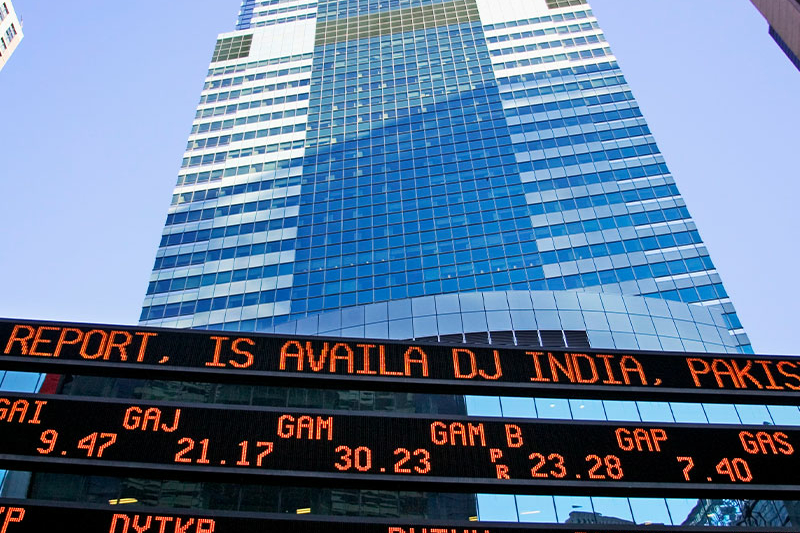Global IPO markets pause to take a breath
Inflation concerns, rising interest rates and the specter of war cast a more sober tone over equity markets in 2022 and through Q1 2023, throttling appetite for IPOs in most regions—but not all

It was clear in the opening months of 2022 that the winds had changed for the global IPO market as compared to the prior year, a rocky path that continued throughout the year and into the first quarter of 2023, but with a few notable bright spots
As we reported in last year's issue of the Global IPO Report, inflation concerns were starting to mount in early 2022 and investors were beginning to accept the prospect that central banks would need to step in to rein in demand. Against that backdrop, Russia invaded Ukraine, further disrupting already frayed supply chains and sending global energy prices soaring. This put further upward pressure on inflation and interest rates have been rising almost vertically since then.
None of this has been kind to IPO sentiment. In 2022, total global IPO value, including SPACs, came in at US$170.7 billion, a decline of 72 percent year-on-year. Excluding SPACs, the total was US$153.9 billion, down 65 percent year-on-year. While 2021 had been a record-breaking year and was unlikely to be repeated under the best of circumstances, these were the lowest global IPO value totals stretching back to 2016.
This continued into Q1 2023, with only US$26 billion in IPOs, including SPACs, down 53 percent year-on-year. Excluding SPACs, this total came in at US$25 billion in IPOs, 42 percent lower than Q1 2022.
Having said that, some context is helpful. Although SPAC deal value declined as compared to 2021, 2022 levels were still well above levels seen prior to the pandemic and the emergency monetary stimulus that supercharged the markets. Banks and investors may have balked at the SEC's promise of stricter regulation, but SPACs have nonetheless cemented themselves as a credible strategy for swiftly accessing public market fundraising.
Moreover, global IPO volume held up surprisingly well despite the macro and market volatility. Of note, larger ticket listings have been concentrated on non-US exchanges, with the Asia-Pacific (APAC) region proving to be comparatively robust, and the Middle East making notable moves on the IPO stage.
In the first quarter of 2023, a positive sentiment was settling over the markets and there were high hopes that a more stable base was being formed from which companies could soon begin to launch their IPOs. In March, however, cracks began to show following the collapse of Silicon Valley Bank, as liquidity issues emerged at high-profile banks in both the US and Europe. Investors watched to see whether any more shoes might drop, as interest rates continued to climb in response to inflationary pressure. Nonetheless, there is cause for cautious optimism about what the remainder of 2023 may hold, as disinflationary signals begin to emerge.
Inflation concerns, rising interest rates and the specter of war cast a more sober tone over equity markets in 2022 and through Q1 2023, throttling appetite for IPOs in most regions—but not all

Last year was a volatile 12 months for the tech sector, with a steep sell-off in growth stocks and a drop in IPOs—but, although the sector was down, it was by no means out

No region demonstrated more resilience than APAC in 2022, with the largest deal globally, the greatest total IPO value and volume, and the smallest year-on-year declines

The US Securities and Exchange Commission has plans to regulate SPACs more closely and mandate ESG reporting—sponsors and companies should pay close attention

Recent months have been exceptionally quiet, especially for the North American and EMEA IPO markets, as the bears have taken the upper hand—and investors and issuers are now hoping for a more active second half in 2023


The US Securities and Exchange Commission has plans to regulate SPACs more closely and mandate ESG reporting—sponsors and companies should pay close attention
It was not just the ebb in stock prices that gave companies second thoughts about launching public offerings in 2022. In March of last year, the US Securities and Exchange Commission (SEC) announced a proposal for new rules to enhance disclosure and investor protections relating to SPAC M&As, or de-SPACs, sending ripples through the market.
The SEC wants consistent and enhanced disclosures for investors and seeks to impose underwriter liability on banks at the de-SPAC stage, bringing SPACs in line with traditional IPOs.
With uncertainty about when and how the new guidance would be applied and its implications for various stakeholders, new SPAC IPO activity, which had already begun to heavily decline at the start of 2022, slowed to a trickle. Sponsors and their banks continue to digest the implications of the anticipated regulations and many have been taking a more cautious approach.
The SEC wants consistent and enhanced disclosures for investors and seeks to impose underwriter liability on banks at the de-SPAC stage, bringing SPACs in line with traditional IPOs. This raised concerns that there could be exposure for financial projections and other misrepresentations in SEC filings. The proposed rules would also require enhanced disclosure about SPAC sponsors and conflicts of interest, and fiduciary duties that officers and directors owe to other companies.
The proposed rules would also require disclosure of material potential sources of dilution and whether the SPAC believes that the de-SPAC transaction and any related financing are fair to SPAC investors. Additionally, the de-SPAC target company would be deemed a co-registrant alongside the SPAC, thereby making it an issuer and its executive officers and directors subject to liability under US securities laws.
The potential underwriter liability is a serious possible pain point. Not long after the SEC's announcement, a raft of banks began effectively placing a moratorium on their SPAC desks. An investment bank will usually work with a SPAC after it has gone public when it finally identifies a de-SPAC acquisition, not just on the IPO. Issues may arise for banks if they are exposed to liability risk from the sponsor or company making claims about the future prospects of the company, which may not be realized.
Vast sums of capital were raised in 2021 and some of this is still waiting to find a home. During those 12 months, SPAC IPOs totaled US$172.5 billion, far eclipsing any previous year, and this may not be matched for some time, given that most of this capital was raised on US exchanges. Until the SEC's rules are implemented, allowing for greater regulatory clarity, and equity markets improve, the SPAC IPO market is likely to remain subdued.
The SEC issued several major rule proposals in spring 2022. In addition to the SPAC rule proposals, the market regulator also proposed a comprehensive set of new disclosure requirements that would require public companies to disclose extensive climate-related information in their SEC filings.
Specifically, the proposed climate disclosure rules would require disclosure of:
These disclosures could include emissions from the company's supply chains and products if those emissions are material, or if the company has set a GHG emissions reduction target that includes its Scope 3 emissions.
The expansive rule proposal is potentially a game changer, extending climate-related disclosures beyond the basic materiality standard, which is the foundation of the SEC's disclosure regime. It is modeled, in part, on the Task Force on Climate-Related Financial Disclosures (TCFD), a voluntary framework released in 2017 by the Financial Stability Board.
The proposed SEC rules are more prescriptive than the TCFD standards and, if adopted as initially proposed, would require public companies to delineate climate-related risks totaling 1 percent or higher of a total line item in the relevant year financial statements. However, media reports in February suggested that the SEC is considering softening the rules, including potentially raising the proposed 1 percent threshold, or possibly removing the so-called bright-line test altogether.
Moreover, the proposed rules require a more detailed disclosure framework, thereby demanding greater internal resources and time commitments to implement internal controls, produce and vet relevant data, and to produce sufficiently accurate and consistent reporting.
The proposal has not been without its hitches. In June 2022, three months after it was issued, in the case, West Virginia v. Environmental Protection Agency, the US Supreme Court found that regulatory agencies must obtain permission from Congress to create regulations that have major economic or political effects. Managing a deluge of public comments on the rules, the SEC missed a self-imposed October 2022 deadline to finalize the rules.
Some are expecting legal challenges to the SEC's proposed rules from companies that consider the requirements too heavy-handed and inappropriate, and the Supreme Court ruling could put the regulator's plans in jeopardy. However, if the SEC does relax the proposed rules as some are expecting, including by raising the 1 percent threshold, the regulator will be in a stronger position to defeat any legal challenge that may be forthcoming.
Meanwhile, in Europe, the European Securities and Markets Authority issued a positive first opinion in January 2023 on the first draft of a set of reporting standards known as the European Sustainability Reporting Standards (ESRS Set 1).
The agency found that the rules "broadly meet the objective of being conducive to investor protection and of not undermining financial stability." The aim is to deliver a consistent set of standards as part of the Corporate Sustainability Reporting Directive (CSRD), a new framework that will be rolled out in a phased approach beginning in 2024. The CSRD applies to large and listed EU companies and to third country companies that do substantial business in the EU or have securities listed on EU regulated markets. It is worth noting that in the future, companies in some jurisdictions outside of the EU, including the US, may be able to rely on an EU determination of "equivalence" of their home country's sustainability reporting standards. Companies in these jurisdictions can point to compliance with their home country's standards as a reason for not complying directly with the detailed CSRD requirements. However, if there are additional CSRD requirements, third country equivalence will not assist.
While some smaller companies that are hoping to list one day may fall below these thresholds, the reality is that expectations throughout the supply chain are rising. Customers and suppliers have their own regulatory mandates to meet and it will become increasingly incumbent on businesses large and small to understand, quantify and report their climate change and broader ESG impacts, whether at the behest of regulators or not. The inexorable shift toward greater ESG disclosure is underway.
White & Case means the international legal practice comprising White & Case LLP, a New York State registered limited liability partnership, White & Case LLP, a limited liability partnership incorporated under English law and all other affiliated partnerships, companies and entities.
This article is prepared for the general information of interested persons. It is not, and does not attempt to be, comprehensive in nature. Due to the general nature of its content, it should not be regarded as legal advice.
© 2023 White & Case LLP